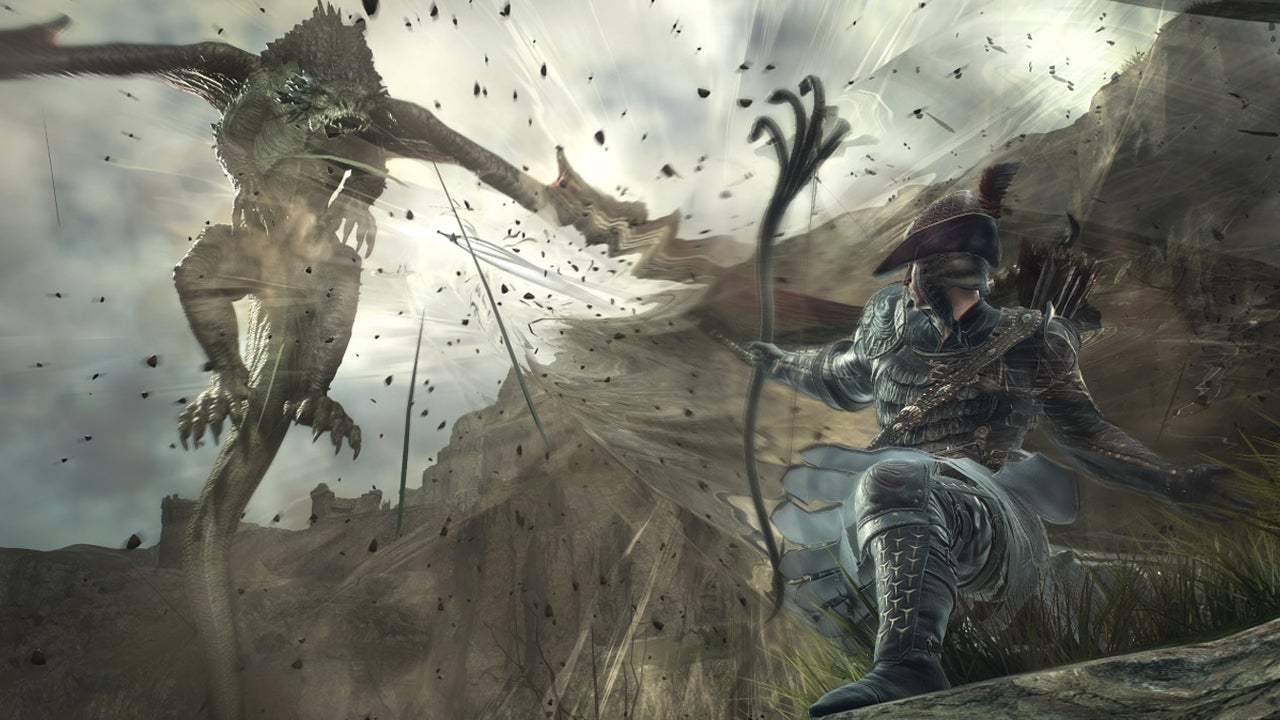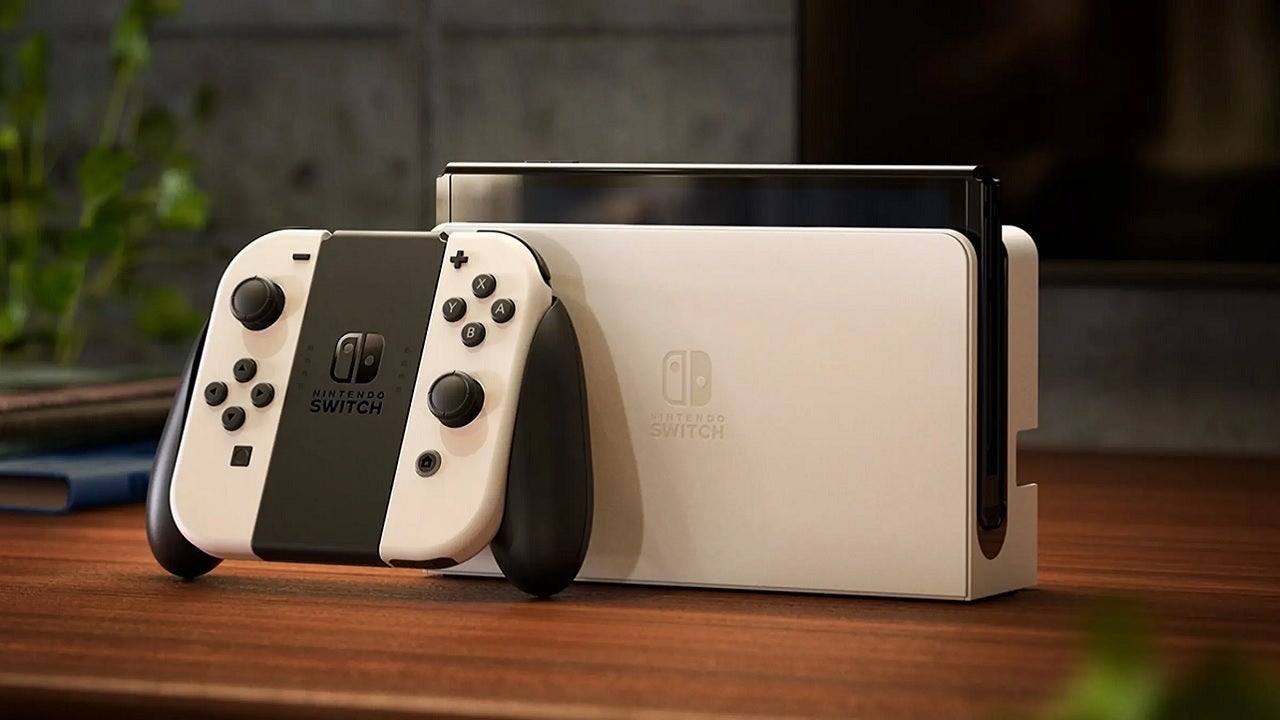Capcom really upped its game with their RE-Engine that debuted in 2017’s Resident Evil 7. It has since seen Capcom through 16 games and three console generations, but none were as demanding and out of that design scope as Dragon’s Dogma 2, which is probably why it’s the first to make the versatile engine visibly bulge at the seams. This is a game that relies on physically based materials, photogrammetry textures, and realistic human models and animation, alongside a fantastical and mythical world, but the bumpers come off in places where we see the open-ended, dynamic, and systemic game design with CPU-controlled enemies and teammates, vast, open plains to explore, and dense towns with constant data streaming. This flips the linear nature of the core engine's focus on its head, raising the demands on the throughput, teams, memory management, and, ultimately, performance.
Graphics, Technology, and Visual Comparison
The RE Engine always delivers good looking games and Dragon’s Dogma 2 is no different. Obviously, it is a vast increase over the original X360, PS3 version. Offering excellent texture details, dense geometry, large and looming creatures, dynamic weather and time of day. Long view dense, high and reactive Foliage, volumetrics, screen space reflections and looks to use mesh shading, tessellated ground and good shadow maps and dynamic lights. Which offers a game that has the hallmarks of the RE Engine and Capcom art design but on a much larger scale. Scaling from the highest-end PC with an RTX 4090 down to the Xbox Series S offers up a vast range of hardware specifications (let’s ignore the Steam Deck for now). Let’s start with those important options and numbers Dragon’s Dogma 2 offers. There’s a single mode across all consoles, but using the PC we can see a selection of adjustments with a nice visual example for many which helps understand the changes and effects you can make within the RE-Engine, but something jumps out. The range of options within each setting is limited – most are a simple on/off toggle or only a Low or High setting. Only a few have a range of settings, with textures and image quality being the most vital.
All three console versions look close to identical in base settings, which align close to the maximum on PC, with some reductions. Specifically, there’s no ray tracing on any console, ambient occlusion (AO) is screen space rather than the signed distance fields of the PC’s highest settings. Mesh level of detail (LoD) looks closest to high rather than max, and shadows again are closest to high rather than maximum. The textures themselves are likely high or max on PS5 and Xbox Series X, but close to low on Xbox Series S – which is a big problem for that console. In addition, Series S and Series X reduce the image quality relative to the PC, close to the fifth (out of 10) setting on the slider and closer to three or four on the Series S. Some areas look to have lower LoD on the Series consoles also but this is very minor.
This leaves the PS5 with a substantially sharper and more detailed image than the other two machines. A reverse of what we saw with Resident Evil 4 Remake, this setting appears to be shader pass pixel sampling related. This impacts textures, shadows, AO, and Alpha effects, so all grass, fire, rocks, signs, and people are impacted with a blockier, more pixelated image and softer details due to lower samples, which is reduced further by the temporal anti-aliasing pass. It stands out in comparisons and, although not detrimental on Series X during stand-alone play, the image quality reduction is one of the largest I have seen since Resident Evil 4. The Series S, though, is a huge reduction over PS5 and even Series X, with textures and image quality being severely degraded. Grass alpha is another small concession, and it’s quite noticeable relative to the other two consoles.
The final piece of image quality, as per previous games, is the resolution output choice. We have the option of native output, entitled progressive, and then a half-width option entitled interlaced – a very old-school nomenclature present since the engine was built. Normally this can boost performance by approximately 35% when pixel or even bandwidth bound as Dragon’s Dogma 2’s internal TAA has a temporal element that helps blend these missing pixels into the final output resolution. All three consoles use the interlaced settings by the looks of things, and this means a full 4K output on PS5 and Xbox Series X via a half-width rasterization pass on the horizontal axis. This provides a 1920x2160 base resolution – upscaled back to 3840x2160 for both – aligns with the 3840x2160 native UI. The Series S drops to 2560x1440 output, coming up from a 1280x1440 base. Pixel counters amongst you may notice this is half the pixels of a full 4K on the bigger consoles and less pixels than 1920x1080 output on the Series S. Ultimately, these are the same targets as Resident Evil 4’s resolution mode for each console.
Godspeed
As we covered in our preview, Dragon’s Dogma 2 may have an unlocked frame rate, but 60fps is all but impossible to achieve on consoles and, from all my tests, impossible to lock on PC, including with the RTX 4090. However, the reasons for this are not straightforward, and my testing had to go deeper on some aspects. Let me explain: During development, many games run with no cap on the performance, just limited by the TV/monitor sync limit. Hence, 60 or 120fps is the normal maximum for many games during this stage. Capped or half-rate options are normally added later. The fact the review version is still unlocked like this is a small red flag that makes me wonder what other corners might’ve been cut, but of course Capcom has released games on weaker consoles with the same unlocked rate, even when the console could never hit 60fps, such as Resident Evil 4 on PS4. By leaving it unlocked, overall performance can be improved in comparison to a 33ms cap.
The reason is Dragon’s Dogma 2 often becomes bandwidth or fill-rate-limited, and this is a bigger issue on consoles due to the contention they have with GPU and CPU sharing the same memory bus, and thus bandwidth. A PC has two dedicated memory pools, which has its own issues, but here it’s an advantage because the CPU and GPU get dedicated bandwidths to work on more tasks independently. This is why we see the use of interlacing and, on the Xbox consoles, a lowering of the image quality setting to reduce pressure, with the Series S being impacted the most due to its much smaller RAM allocation and bandwidth.
On all consoles, though, we see similar readouts, often hovering between the lower end of 30 to 40fps. Series X is slightly better than the PS5, within 4% on average, but most often being within the margin of error. Once we get any heavy alpha effects, such as fire-breathing dragons, flooding water, or dense foliage and alpha we see this bandwidth contention crop up dropping both into the 50 to 70ms range on frame times, which means bouts of sub-30fps.
The other big issue, and what explains why the team at Capcom has taken the choice to ship the highest resolution and image quality on each, are the towns. Vernworth, for example, stresses the engine and hardware most, with many aspects it was never designed for. Large, dense open areas, high-geometry and material samples, multiple light sources, large numbers of NPCs with dynamic pathfinding, AI, emergent gameplay, state models, and then the biggest one: consistent data streaming. Here, all platforms struggle, with frame times bouncing up and down like a ping pong ball. In a run to the tavern, a well-known tradition here in England, both consoles are sub-30fps as the CPU and memory demands cause erratic performance, which hits its deepest low as you enter the pub and the NPCs are instantiated and allocated a state.
The faster the hardware – or the more reductions made on the amount of data and tasks the platform is pushing – the better your performance will be here, but even on my high-end 5800X3D 8c/16t CPU at 4.5GHz we are often in the 30fps range whilst moving around the town. The consoles do not use the SSD and dedicated hardware design very well or maybe at all, with the impact being higher here than you would expect. Specifically, on the PS5 as has more silicon dedicated to alleviate data seek and load from the CPU. The Series X is slightly worse in these CPU-impacted areas, but again, it’s academic as neither delivers a stable frame time readout.
The Series S performance is close enough to both with it being, on average, just below the PS5. Without a frame rate analysis they all feel about the same in play, but the Series S will dip in the same bandwidth and CPU-heavy sections, even with the significant reductions relative to the bigger consoles. On pure pixel counts and sampling we are looking at an approximate reduction of 60-70% by comparison to those, but the CPU is close to the same as the Series X, and in towns these reductions could offer a small advantage. The smaller console delivers close enough performance metrics here to not miss anything. The biggest delta are the sacrifices in texture & image quality, and the small pool of RAM highlights the impact on how Dragon’s Dogma 2 looks far more than frame-rate.
I am sure with more time and effort the team can improve the current state on all formats, but the Series S is the one most in need due to the degraded image it has and, even on a 1080p screen, this is an obvious eyesore. A variable refresh rate (VRR) screen will not help here as all of the consoles are often below the required range and can stutter into 50-80ms frequently during many areas, and that cannot be resolved by the technology.
Power PC
The PC version starts well, a Direct X 12 API kicks off a fixed Shader compilation pass and then once complete you never have to think about that again. Dragon’s Dogma 2 on the Steam Deck, as it stands currently, is unplayable though. It’s likely engine,memory, bandwidth and API-related, but even at a forced 640x480 output and Low settings, we are seeing a paltry 7-14fps at best.
At the same time, this is the first game from Capcom that appears to have had a high-end PC focus from the start, and may have been a PC-developed game from the off due to the big RPG market PC has. I’m led to believe this because it offers both DLSS and FSR3 options right out of the box, with Nvidia Latency Boost all within the menu. Both are better options than interlaced, so long as they’re set at balanced or higher, with DLSS being clearly superior. From a GPU perspective, my RTX 4090 has far more performance and bandwidth than anything else, and as such a 4K output using DLSS Quality offers a vastly superior image quality to consoles. The ray traced global illumination can also be turned on, but the improvement this has was often very slight to invisible outside but improved ambient shadow inside and, aside some edge cases, the performance cost may not be worth it for most.
During the GPU-heavier sections out in the wild, fighting griffons, trolls or dragons, Dragon’s Dogma 2 holds a close lock on 60fps and even higher (if you have the screen to support it). But it can dip and sway during rapid action, and fast camera movement or streaming sections under 60fps often enough to notice, but a G-Sync or such screen would help here. These are, again, the same issues with CPU, memory and data causing the GPU to stall and wait for work, which means we get delays in our frame delivery and thus frame rates can still drop below 60fps. But in these, admittedly big moments, you will get better performance even if not a locked 60fps. In the towns the GPU is less of an issue, and here the CPU and data streaming demands mean we are again down into the 30s with stutter. We’re fully CPU and memory bound here, and no GPU performance can resolve this. It remains something for the developers to attempt to resolve and just as this review was closing out the team confirmed my findings. They plan to investigate the high CPU demands due to the NPC state models and location tracking so an update should land once ready.
Moving down the stack and sitting in between the PS5 and RTX 4090 is my AMD-powered RX6800 with a 6c/12t 5600X at 4.6Ghz. We can run Dragon’s Dogma 2 with a superior image quality using FSR3 set to balanced at 4K and settings close to the PS5, and we get a 45-60fps performance in the grassy hills and creature battles. Of course, we are always at the mercy of the CPU performance in those towns, and as such we can see lower performance and more stutters as the GPU is left waiting for work. On PC memory demands can exceed 8GBs of system RAM and 13GBs of VRAM which is far higher than expected levels.
Of note for all is the night time sections, which are a key point of Dragon’s Dogma 2 as it is pitch black out there, but with man-made lights, foliage and shadows this can ramp up demands on the GPU. Here the RX6800 can be heavily impacted, which is increased if ray tracing is enabled, so I recommend you keep it off unless you can find a benefit that outweighs the 10-18% cost it can have on performance. That said, this AMD system still offers slightly better image quality and superior performance over all consoles, and with a faster CPU it may have some legs in the town. But do not expect a stable readout across any piece of hardware at the moment when traveling or walking through the town square.
Loading is not such a highlight, again pointing back to the core aspects of data and streaming memory management. It’s still very fast considering the size of the world, but across PS5, Series consoles, and SSD-equipped PCs they all take approximately 15 seconds to load in. Of course, this will be more dependent on a faster CPU than the SSD speeds.
Summary
When picking which platform to play Dragon’s Dogma 2 on, be aware that PC players get the best choice of options, thanks to this being the first game from Capcom to ship with DLSS and FSR3, offering enhanced image quality over consoles. However, CPU and memory impacts remain the biggest cause for concern in performance,which highlights why the team has pushed settings and resolution as high as possible on the PlayStation 5, Xbox Series X, and Xbox Series S. No matter what, the frame rate is going to drop to sub-30fps when you’re in town, and so a closer hold to that benchmark with better image quality is their aim, rather than large spikes from 60 to 30 and degraded image quality the whole time. This is where they need to improve, as even at the lowest setting on PC we leave 70% or more GPU performance on the table and still run under 30fps. If I was a betting man I would suspect over the next two months or so patches will come that improve the consistency, if not the overall performance, across the board. If you’re sensitive to frame rate fluctuations it may be worth giving them that time before embarking on this majestic journey, because the performance issues that are along for the ride at the moment could be enough to ruin that adventure.












